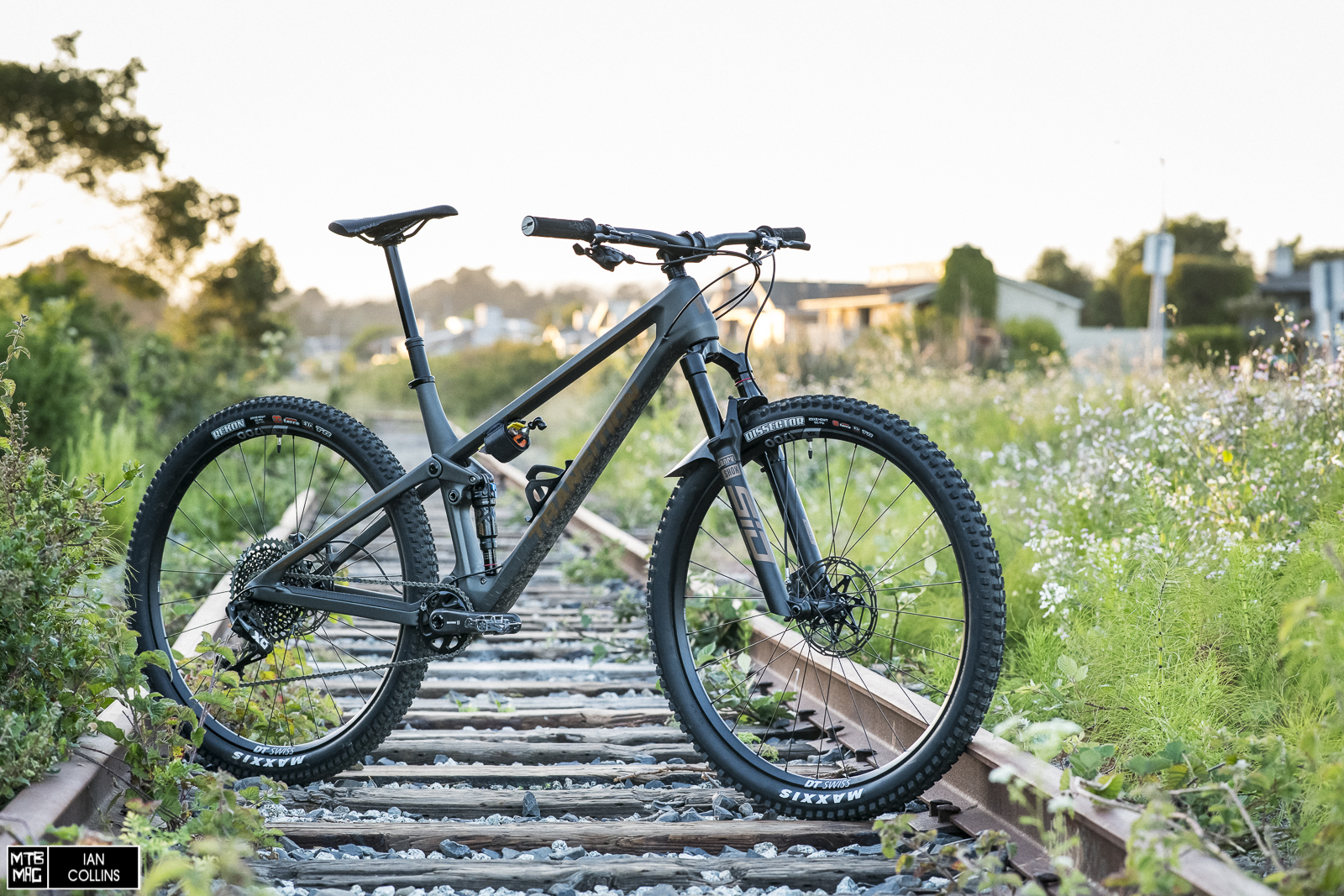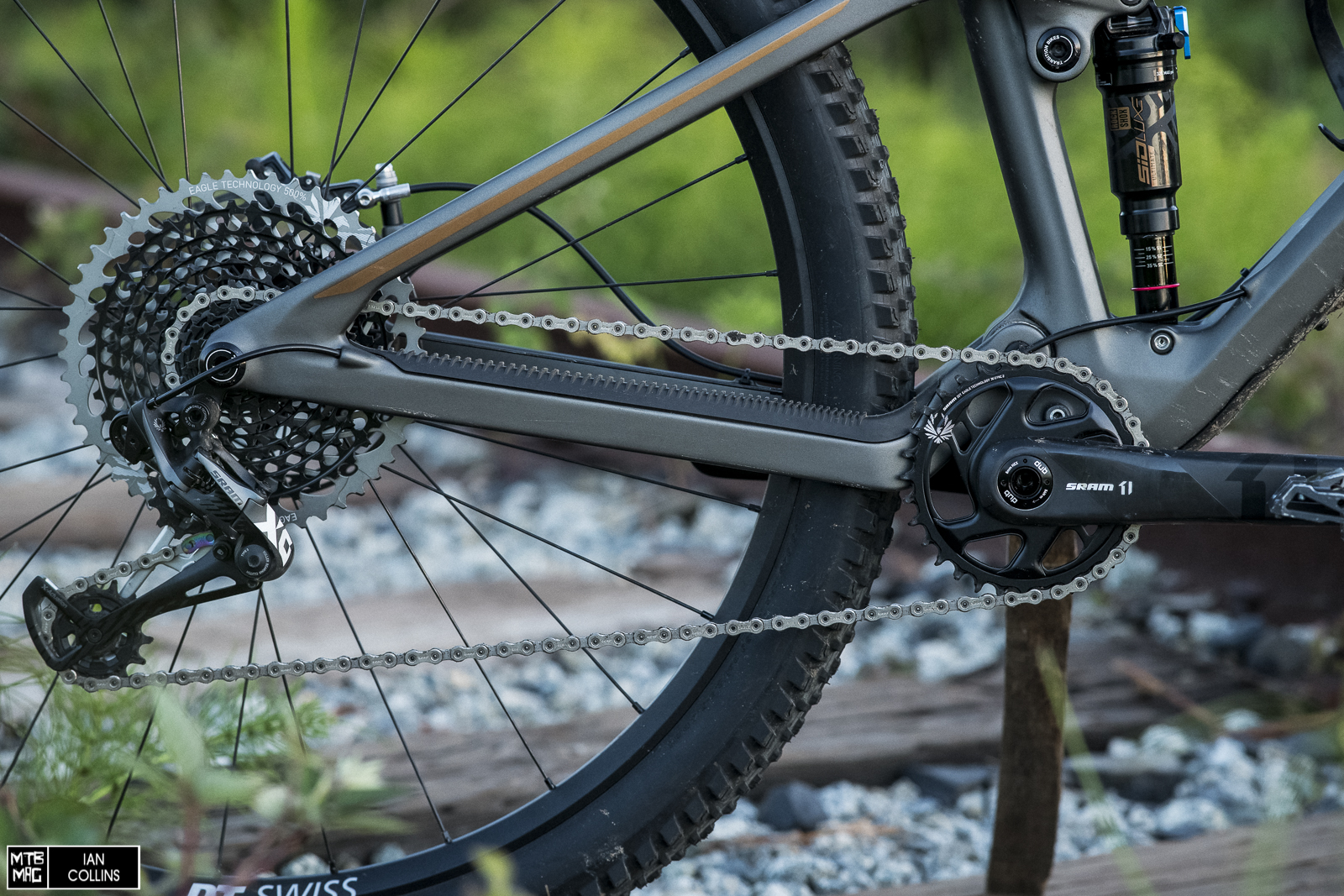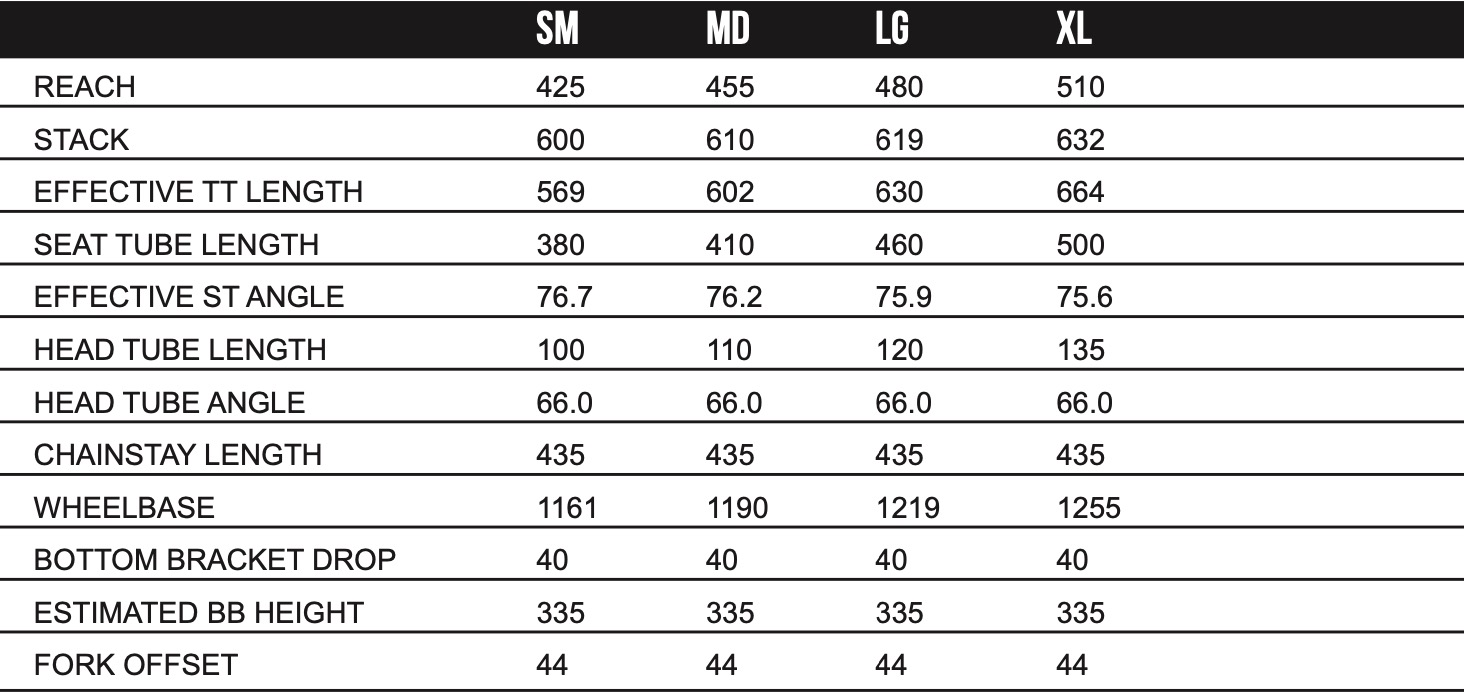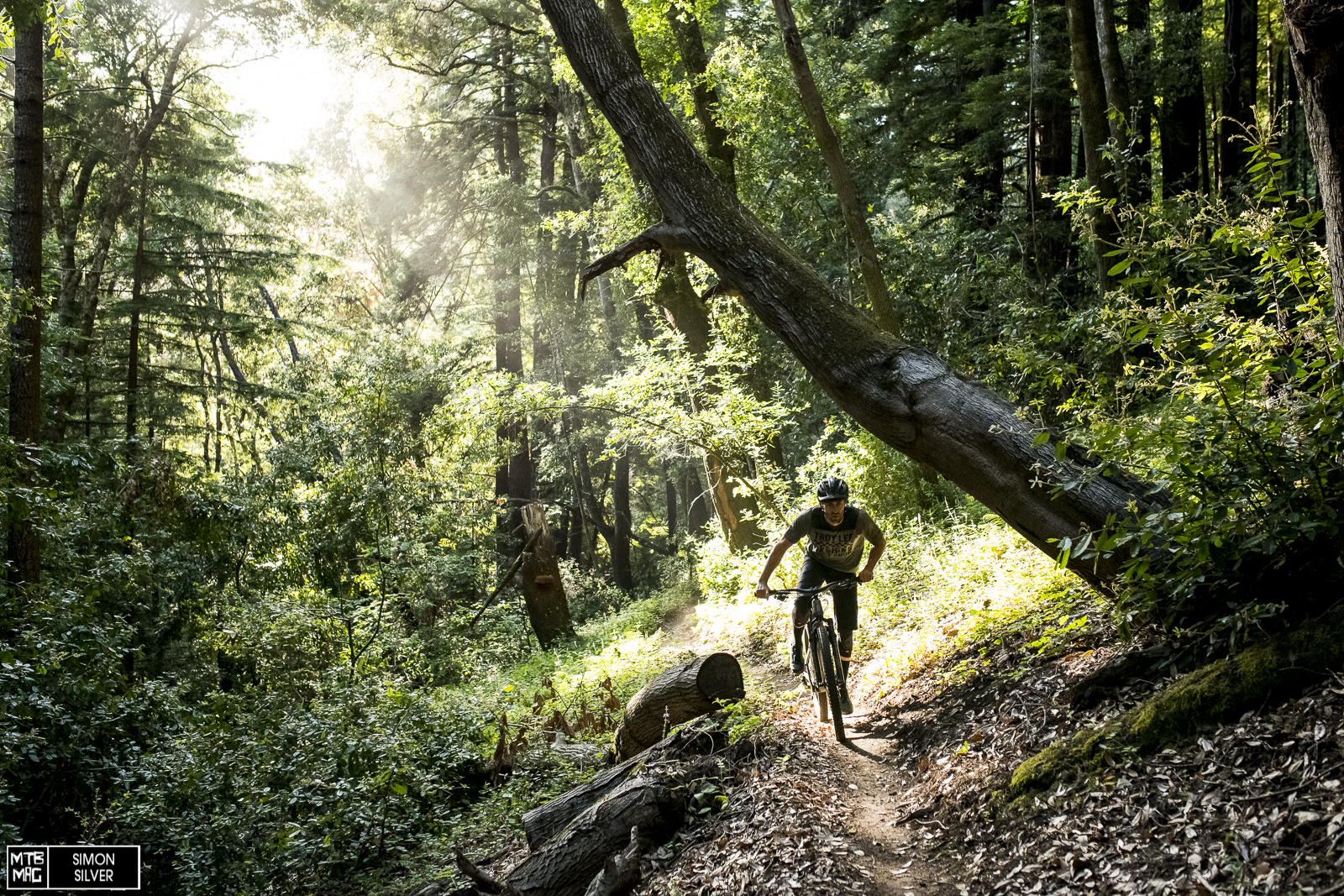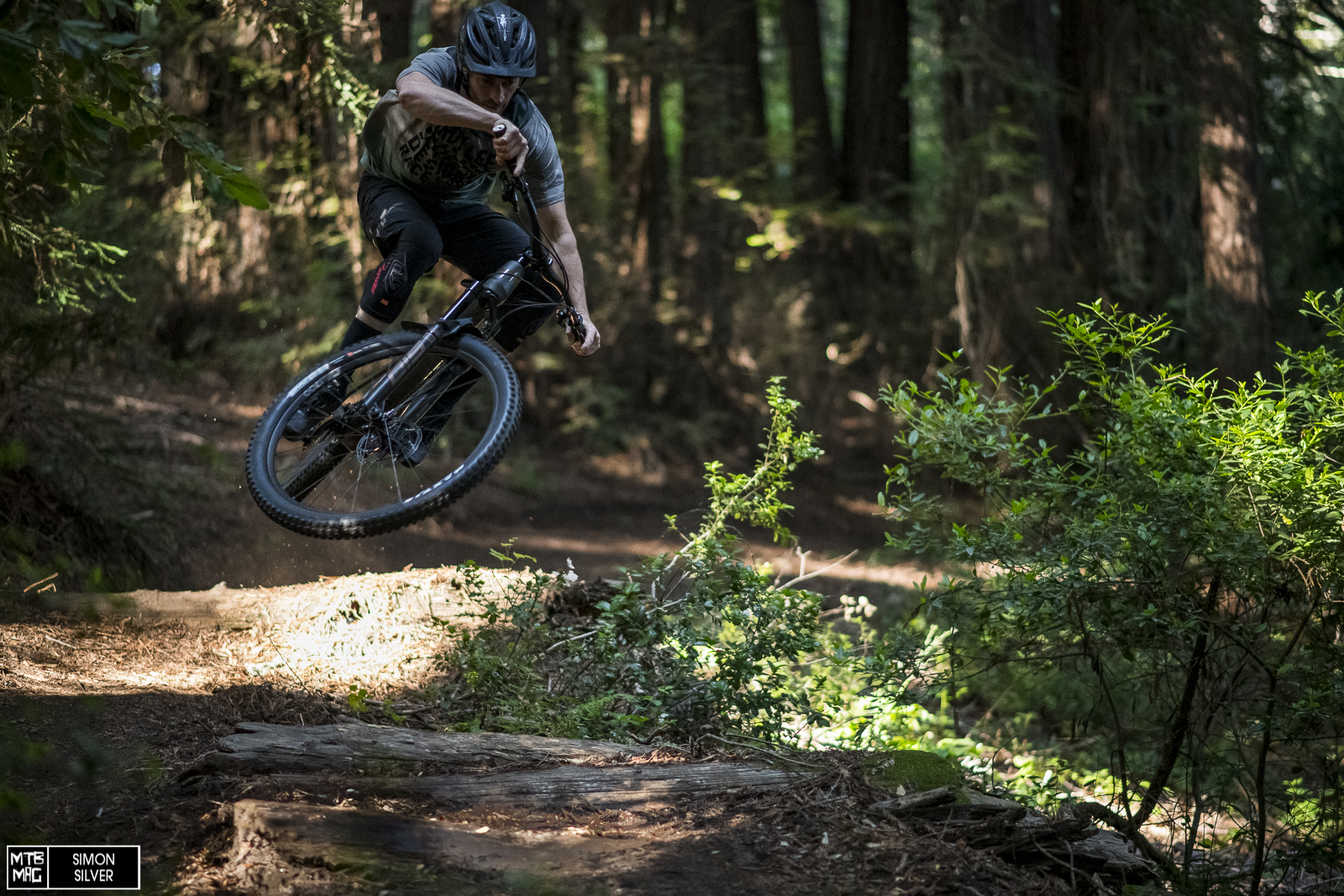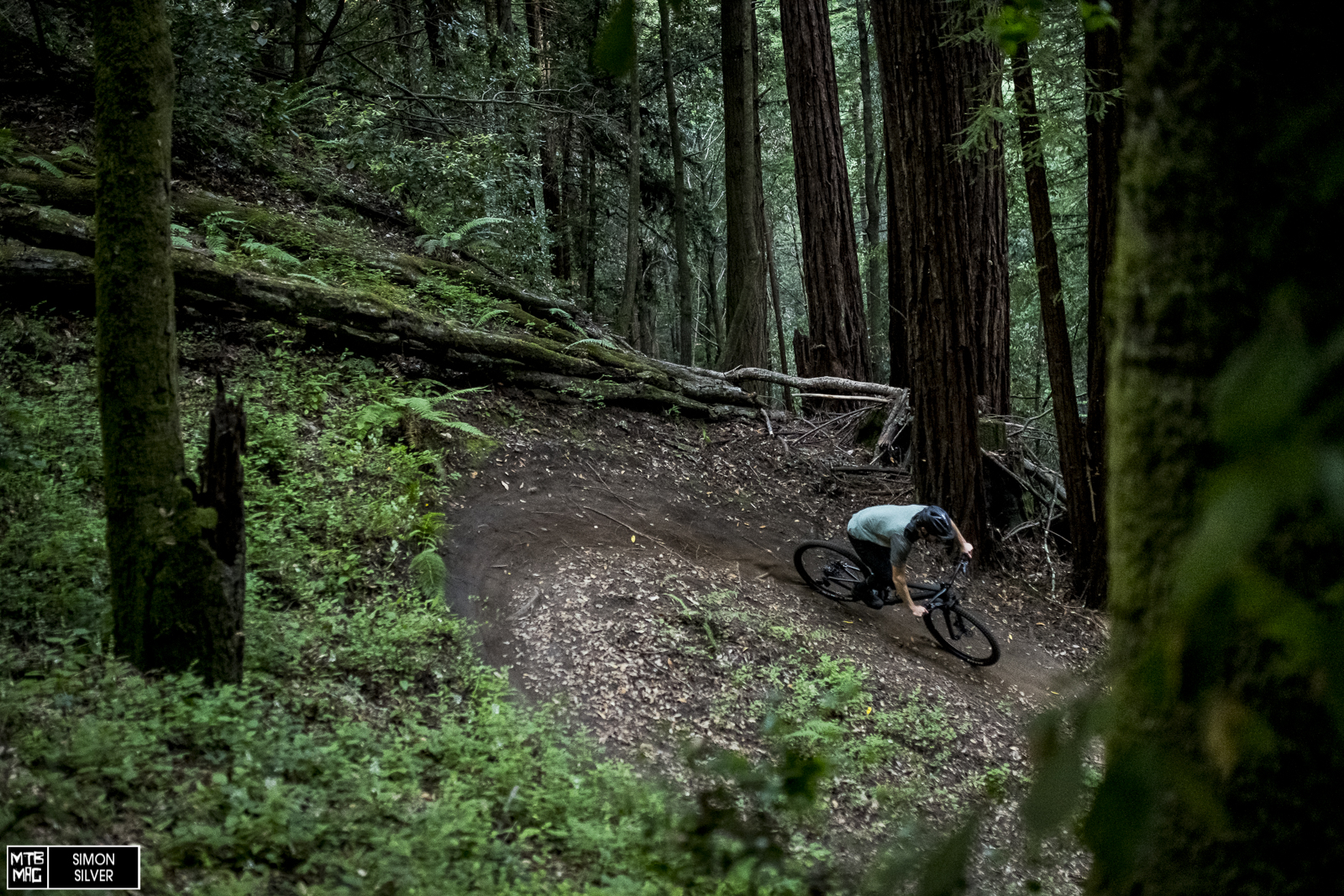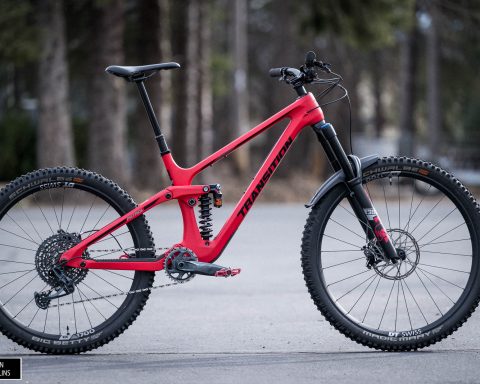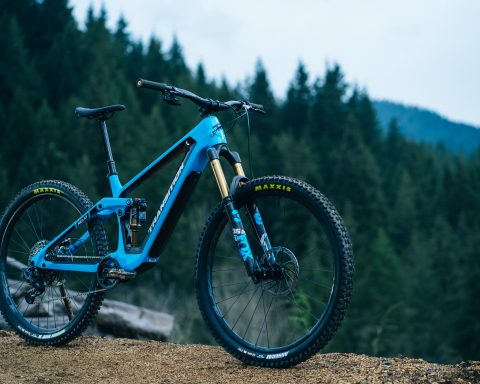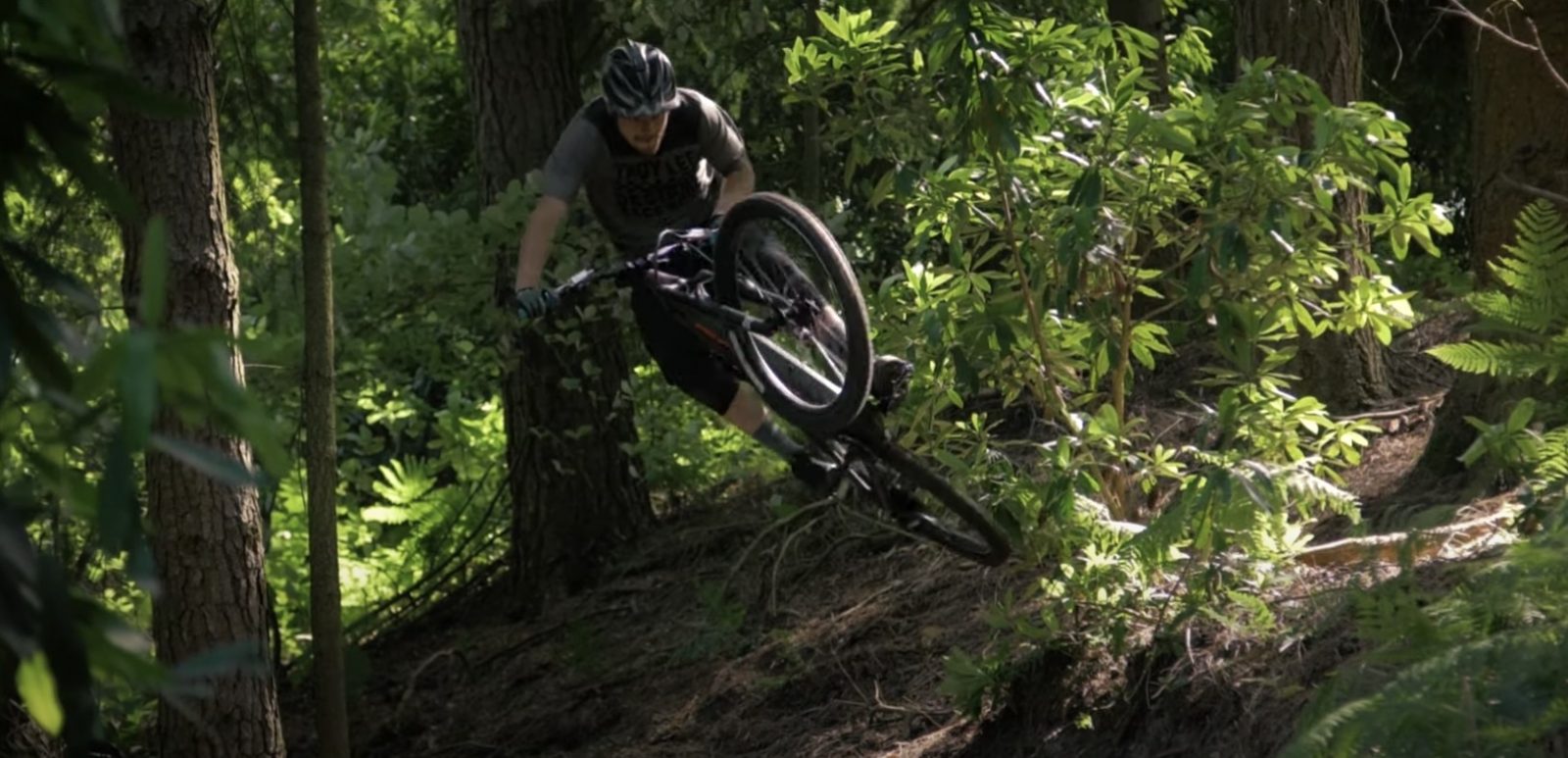The latest project from Transition Bikes is a bit of an unexpected one. Generally known for bikes that are aimed at the heavier duty end of the spectrum, it was somewhat surprising to see the Pacific Northwest brand introduces the Spur – an aggressive XC bike. In terms of a quick overview, the Spur features 120mm of travel front and rear, a flex pivot style rear end in lieu of a Horst link, and an impressively low frame weight of ~ 5.4 lbs with shock. After seeing first hand how impressive Transition’s latest efforts have been by way of testing the new Sentinel , we knew this bike would not be a half hearted effort by any stretch of the imagination. I’ve been lucky enough to have spent some of my longer days in the saddle on this bike over the last few weeks, so read on for the full scoop …
Details
- 120mm travel front and rear
- 29″ wheels
- Boost hub spacing
- Metric shock spacing with standard eyelets
- Progressive suspension kinematics
- 2.4 rear tire clearance
- Fully guided internal rear derailleur cable routing
- Carbon tuned pivot-less flex stay
- Threaded bottom bracket
- Press in cup headset to allow for angle adjust headsets
- Accessory mount on underside of top tube
- 2 sets of water bottle mounts on down tube
- Approximate 2500 Gram frame weight (medium with shock)
- 25.5 pounds (Our scale, L, no pedals & no tubes)
- $5,999 USD
- Lifetime warranty
Starting with suspension, the Spur sees the all new SID Ultimate both up front and out back. Both the fork and rear shock are as ultra-minimalist and stripped down as it gets. An allen key is required for rebound adjustments and a single full lockout is activated externally by small, but easy to use levers front and rear. The fork features a short 44mm offset crown that pairs nicely with the bike’s slack, for XC anyway, 66º head angle.
A few key features starting clockwise from the top – a flush mount rubber chainstay protector keeps things quiet and guards your asset. Gaining wide popularity is an accessory mount under the top tube for storage such as WolfTooth’s B-Rad strap. Lastly, a secondary water bottle mount is fitted to the downtube for huge days, sans hydration packs.
As far as the front end goes, apologies for swapping the grips. I replaced the very suitable Sensus Lites (props to Transition for spec’ing them) for the not so suitable Meaty Paws that I’m thoroughly addicted to. Anyhow, the 800mm wide X 20mm rise OneUp handlebar is a great choice, however I was looking for a bit more front end height on the steep trails in Santa Cruz so I swapped it for a 35mm rise…While I’m not an XC racer type, I think most people who would be in the market for this bike would approve of the handlebar.
The DT Swiss XR1700 wheelset gets the job done reliably while helping reach an incredible pricepoint – more on that later. They featured reasonably light weight and sturdy handling but not the fastest engagement. Upgrading to carbon will obviously make the bike come alive a bit more but these were a good spec for the bike.
Cockpit roundup, clockwise from left: OneUp’s dropper post is arguably the best in the game aside from the Reverb AXS. The 180mm travel was more than enough for my lanky legs and the actuation is smooth and consistent. As mentioned earlier, the OneUp bar is great – it takes the edge off far more than most and has a great up/back sweep combo. The RaceFace Turbine R stem is svelte and sturdy – let’s give it up for XC bikes designed around a fast handling 50mm length as well. Lastly, while the ANVL saddle is decent, the more I rode it on long rides, the more I yearned for my own seat. This isn’t a big deal as contact points are always rather personal.
Transition sent this sample out with a SRAM X01 Eagle drivetrain with a 10-50T cassette for 500% range. After I started testing this bike a new group came out with a 10-52T and 520% range, which will be standard equipment on the production Spurs. In any case, the shifting is blazing fast and accurate – even with the kit I tested 500% range is more than enough. 175mm carbon fiber cranks and a 32T chainring round things out nicely. Lastly, I gave the Sentinel high praise for its super direct rear derailleur cable routing with no tight bends, which makes for much smoother shifting. The Spur is no different so it’s also due the tip of a hat.
Unsurprisingly, Transition chose SRAM’s excellent G2 brakes. While I have no issues with the brakes themselves in terms of performance, I did swap out the 160mm rear rotor for a 180mm to help manage the steep terrain in the Santa Cruz area. Pictured is the Centerline-X rotor, but standard Centerlines are OEM.
A few frame related details, clockwise from left: the Spur has a surprisingly good bit of room for tire clearance – up to 2.4″ to be precise. The headtube utilizes press in headset cups, meaning if you wanted to you could fine tune your head tube angle. Lastly, you might notice there’s no pivot in sight near the rear axle. This is Transition’s first foray into a flex pivot suspension layout, and also my first time riding one if my memory serves me correctly…
Geometry
The Spur uses Transition’s now infamous SBG geometry – in short that means: Long reach paired to a short stem, slack head angle paired to a short offset fork, and a steep seat angle. While you can make your inferences from the chart above, it’s worth pointing out that the bike can have its 190mm x 45mm swapped out for a 190mm x 37.5mm to reduce the travel to 100mm, thus taking on more of a race demeanor. While you’d likely also want to swap the fork for a 100mm option if you were serious about XC racing, it isn’t an imperative.
On the trail
I’ve got to admit, I rarely ride cross country bikes, especially of the race variety. That said, over the last few years I have been drawn to and spent a fair bit of time on aggressive short travel 29″ bikes such as the Evil Following, for example. At only 25 pounds and with a lighter duty build, the Spur is entirely different animal, however, its geometry and general disposition surprised me in terms of how little it compromises on regarding overall capability. With that in mind, and given the aforementioned steep terrain that I frequent on my home trails I ended up raising the front end a bit before I really got comfortable. Riders who this bike is squarely aimed at would likely be happy with the standard bar, and on mellower terrain I likely would be as well.
Beginning with the climbs, at a surprisingly low weight of just 25 pounds with aluminum wheels and fairly meaty tires – a Maxxis Dissector up front and a Rekon out back – the bike was a breeze in that regard. As far as body positioning is concerned, the geometry was flawless. With the seatpost extended, the 75.9º seat tube angle had sitting forward, up and over the front end without straining much. I didn’t have to slam my seat forward or resort to any other odd setup hacks either. I inched my way up a handful of climbs that I’d previously never conquered, and did so with surprising ease. The 435mm length chainstays seemed to be an appropriate length as well. Put it this way – no section of trail, up or down, made me feel like I wanted it to be any shorter or longer. As far as the pedaling efficiency goes, the Spur was pretty darn good although I wouldn’t say that it felt dead neutral unlocked. I did feel a little bit of oscillation under power, and while it could all be in my head, I had to wonder if some of that was due to the stored energy in the flex pivot rear end. That’s not to say it was overly springy but it didn’t feel totally muted. In anything case it provided excellent traction and roll over on techy punches. On long, smooth, boring grinds I generally locked it out though.
Once pointed downhill the Spur was an absolute gas. To me, I didn’t think I would, or could have this much fun on a bike that’s this light duty and I mainly credit that to the frame – a combination of its layup, suspension and above all, geometry. I hashed out quite a bit of the details about the spec under the “Details” section, but in summary I think the product managers at Transition carefully chose a really well thought out spec that’s nearly perfect for this category. This was my first time riding the new RockShox SID suspension. At times, considering how hard the Spur can be pushed, I was wishing the fork was a bit meatier, but I think that goes with the territory to a certain extent. After all, it is the lightest XC race fork that RockShox offers and it’s a key part in getting the weight down. That said, on the whole I was pretty damn impressed, particularly by the action of the shock and fork, given how scant they are. They both offered a perfect amount of progression and I still haven’t experienced a single harsh bottom out up front or out back despite sending the bike a bit harder than it’s likely meant for. I falsely assumed that perhaps given how light duty they both are, perhaps on long descents they’d get a bit overheated and start to feel a bit wild, but that also was never the case.
When it came to cornering, I was definitely under the assumption that with a frame weight this scant (roughly 5.4 lbs with shock) the Spur might feel a little squirmy when it got pushed around a bit. Again, I was proved wrong. Some of the tubing is a bit oversized as is the hardware and the bearings. There’s also the fact that eliminating a pivot near the rear axle likely improves torsional rigidity to a certain extent as well. So when you begin to add it all up, it makes sense, but at that weight, it is an impressive piece of engineering – no doubt about it. I think if there was any hint of flex or vague feel in the overall handling it was likely coming from the wheels and that a set of carbon hoops would make things even snappier. Speaking of carbon wheels, while the flagship spec version of this bike has them, and SRAM’s AXS electronic drivetrain. Although at $9k, it is rather pricey, good luck finding a similar bike that doesn’t cost substantially more. Anyhow, tangents aside, the Spur is masterful in the corners overall. It’s nimble, sprightly and the traction is bountiful.
Another unexpected attribute was just how confident the bike was in the air. To a certain extent this likely comes from the new school geometry. Compared to the old way of doing things, a slack head angle, short offset fork and 50mm stem makes for a bike that’s certainly far more poised when the rubber leaves the dirt. Another aspect that helped with this was the progressive rear suspension curve that, along with a nicely tuned layup, provided loads of pop while buttering out the landings. For those who like to geek out on numbers, the Spur has a 30% of progression with a consistent linear rate of change. In any case, I found myself constantly hunting for bonus lips and side hits all over trail – aka, having way more fun – at all times. That said, the bike still means business. Although I’ve never raced Downieville, I have ridden it plenty and I’d imagine this would be the ultimate bike for that race.
Overall
At the end of the day, I haven’t had quite enough time on this bike to label this article as a long term test, but I’ll continue to ride it in earnest all Summer long. I will be testing the new freakishly light 1,250 gram Roval XC wheels on the Spur, which will glean some insight into how it will ride with carbon wheels. I don’t spend a lot of time on bikes in this particular category, which seems to be budding at the moment. So, if I had to dig a bit, my one personal gripe would be that the fork was a hair on the flexy side, but it is appropriate given the bike’s category and honestly is something that I am personally just not all that used to. Perhaps if I owned the bike I might swap the SID for a Pike to better suit my style and local terrain. A final note – at a hair under $6k, much like the Sentinel I tested, the value on offer here is very tough to beat. Transition is putting the hurt on both big brands and other boutique brands alike. Their latest efforts have been top notch. We’ll keep you posted on how it goes long term…

